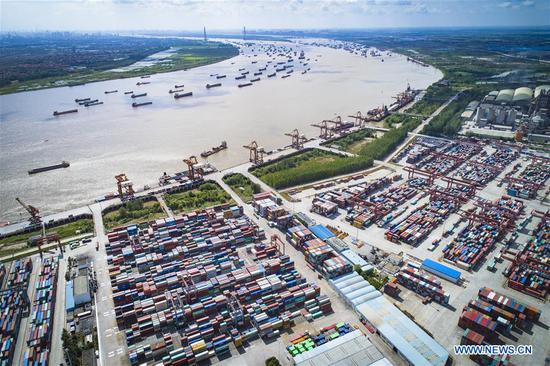No ecosystem left unaffected by problem, warn researchers
The full extent of the problem of plastic pollution of the oceans has been revealed after a sample of sea creatures from the world's deepest depression, the Mariana Trench in east of the Philippines, were all found to contain plastic fibers.
Researchers from the School of Natural and Environmental Sciences at Britain's Newcastle University also looked at five other areas of the sea deeper than 6,000 meters, finding plastics in all of them, causing them to conclude that it is "highly likely there are no marine ecosystems left that are not impacted by plastic pollution".
The discovery came as a nasty surprise to research leader Alan Jamieson, whose team usually concern themselves with looking for new species in the deeper parts of the ocean.
Having identified numerous examples of tiny shrimp that live in the ocean depths, the team decided to see if there were any traces of plastic there – and found to their horror that there were.
"We are sitting on the deepest data set in the world, so if we find (plastics) in these, we are done," he said. "Half of me was expecting to find something but that is huge."
The problem of plastic pollution of the seas is well known, and has become a major international talking point in recent years, but because of its cost and difficulty, deep water areas have been largely overlooked in research that has focused on problems caused nearer the surface, affecting fish, sea birds and the like.
But this has revealed the full scale of the problem, and its wide-reaching impact. The world currently produces more than 300 million tonnes of plastic products every year, and it is believed there are at least 5 trillion plastic items in the world's oceans.
Earlier this year, Dorte Herzke, a senior researcher at the Norwegian Institute for Air Research said the problem of plastic pollution in the oceans was so extreme that traces of microplastics were even turning up in samples of snow and ice from the Arctic circle, hundreds of kilometers from the nearest human habitation.
The most alarming aspect of the deep sea pollution, Jamieson warned, was that the extreme depth meant there was no way out for the material.
"If you contaminate a river, it can be flushed clean. If you contaminate a coastline, it can be diluted by the tides. But, in the deepest point of the oceans, it just sits there," he said.
Another side effect is the impact it was having on the new species the team was finding, as they had never been seen in an uncontaminated state.
"There is no data about them in their pristine state," he said. "The more you think about it, the more depressing it is."
Contact the writer at Julian@mail.chiandailyuk.com


















































